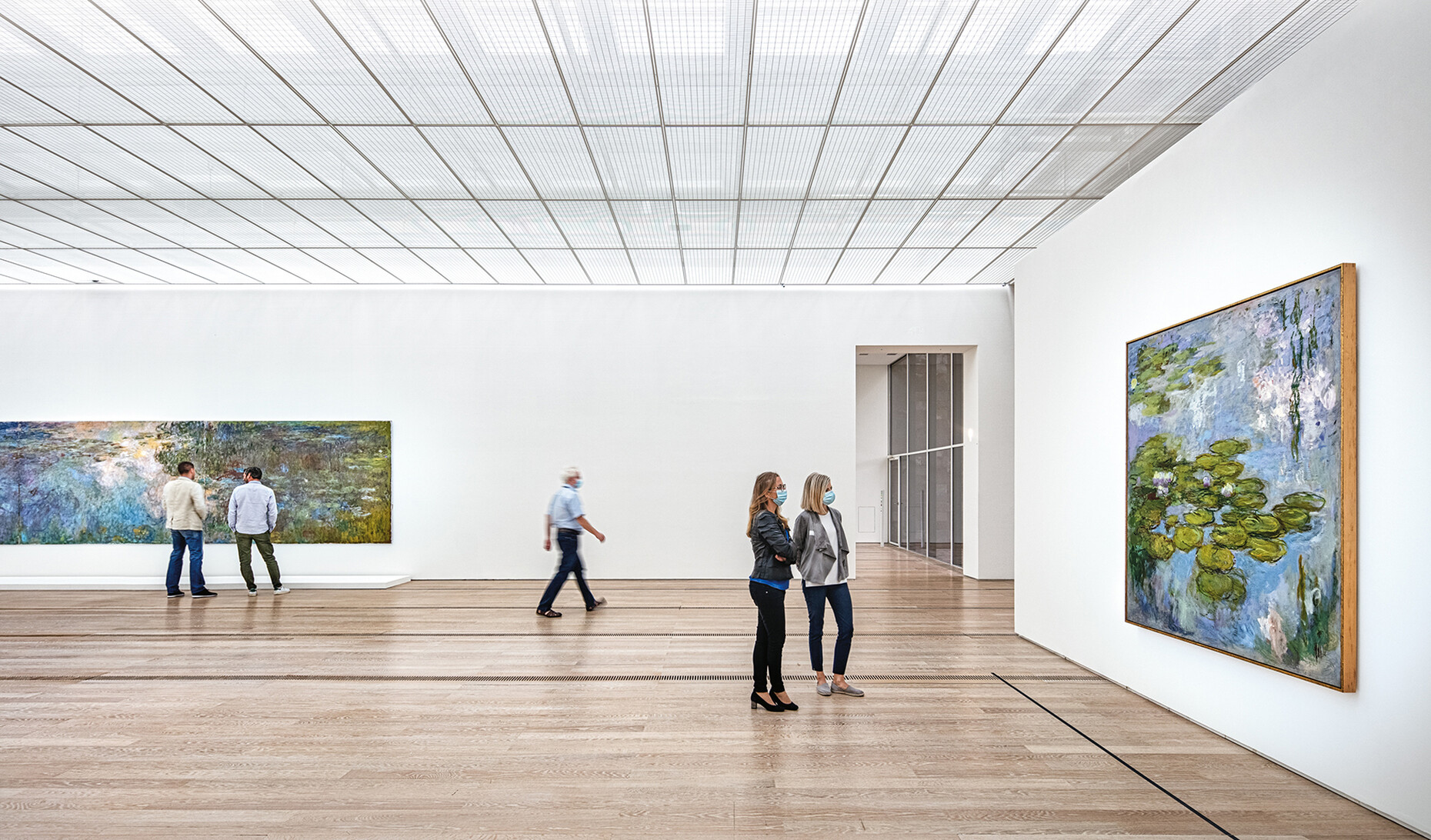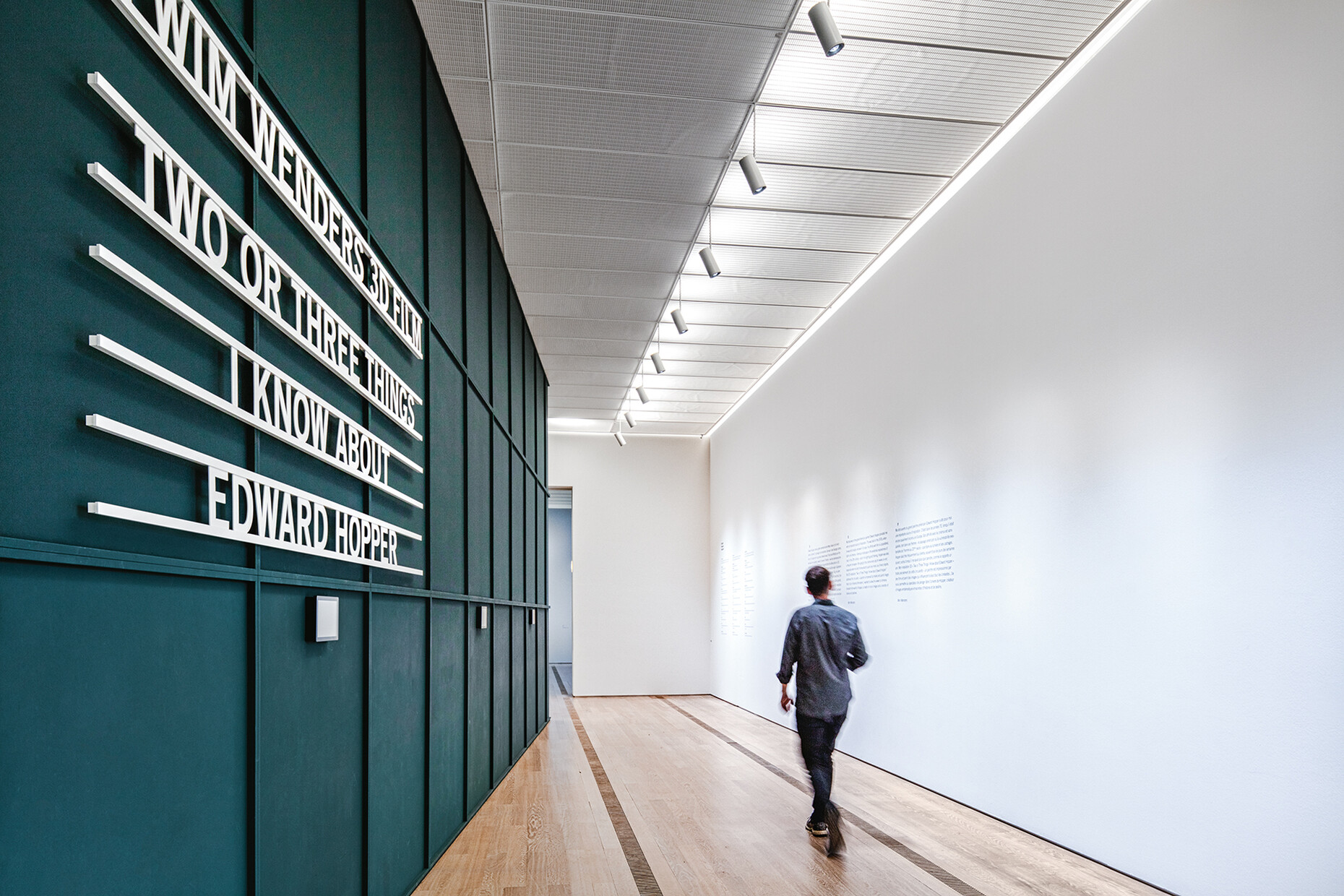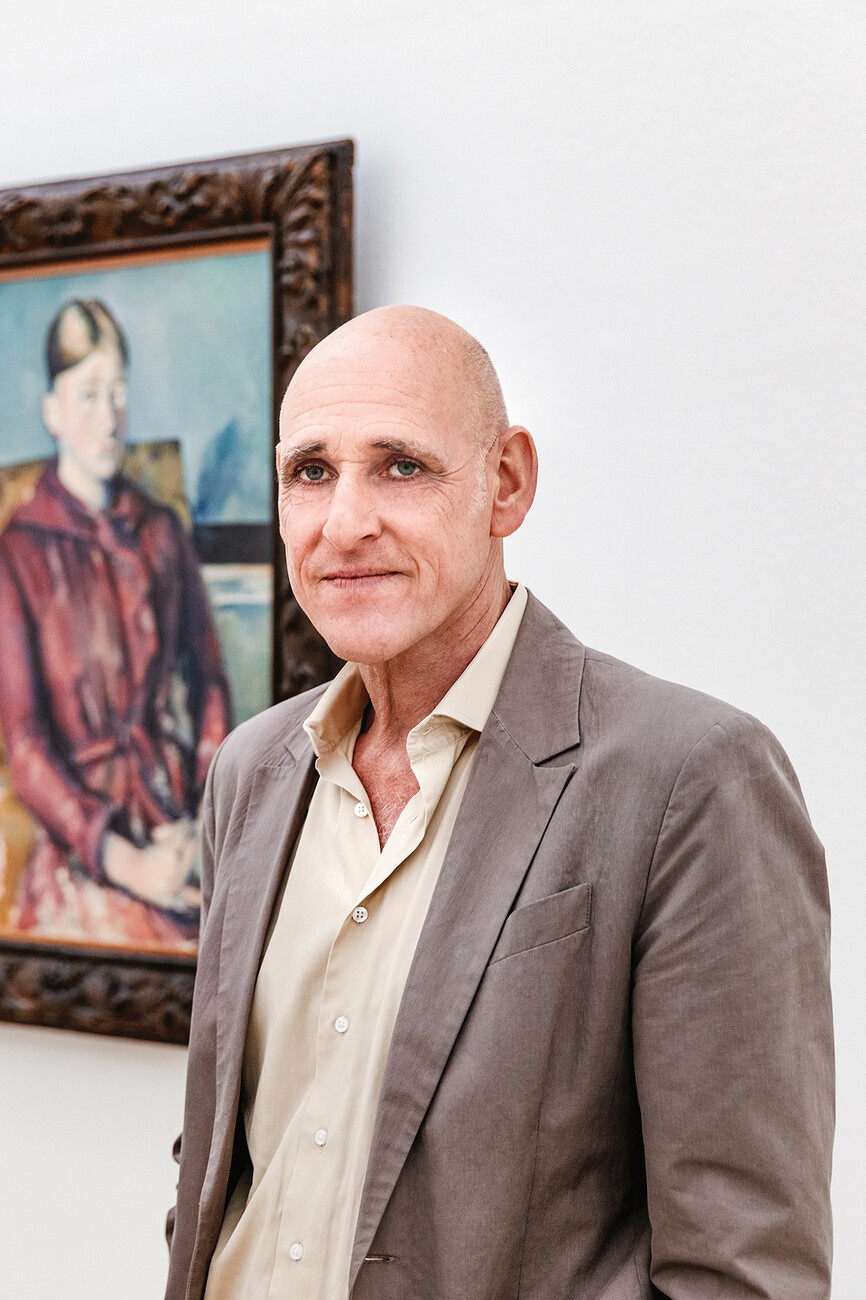Spotlight for the art
Light has always been groundbreaking for the Museum Fondation Beyeler in Riehen near Basel: Embedded in the nature of Berower Park, the rectangular low-rise building opens up to the sky with a glass roof. Floor-to-ceiling windows offer magnificent views to the garden side, as well as deep insights into the exhibition rooms. Low thresholds were a concern of the founding couple Ernst and Hildy Beyeler in order to make their extensive 20th century art collection accessible to a broad public. The elongated museum building for this purpose was designed by Renzo Piano at the end of the 1990s. With walls of volcanic rock, a winter garden and a garden pond, the Italian architect created gentle references to the adjacent river landscape.
In order to ideally show off the artworks of the Beyeler Collection, as well as those of the museum's temporary exhibitions, Zumtobel has now joined forces with matí Lichtgestaltung to come up with a new concept that exploits the current possibilities of technology while itself remaining discreetly in the background: "The exceptionally atmospheric museum building by Renzo Piano was not to be visibly altered by the new lighting in any way through structural measures - and this was a key requirement of the museum. Only the light was to be given a new, high-grade quality," says Hanspeter Keller, managing director and owner of matí Lichtgestaltung. The 22 showrooms were once equipped by Piano with an elaborate false ceiling that ideally accommodates the technical equipment while diffusely guiding the light into the room. For this purpose, Zumtobel came up with a customized LED special lighting solution in which a total of 600 wallwashers are installed in the false ceiling, providing indirect general lighting that supports daylight with optimum color rendering. The color temperature can also be individually adjusted with tunableWhite technology depending on the exhibit. The experience of the room as well as the reception of the art are consistently pleasant regardless of the time of day.
Thanks to Zumtobel's lighting solutions, illuminance in the rooms was increased by almost 50 percent, while energy consumption was noticeably reduced. A clean lighting image is indispensable to perfectly support the effect of the work of art and to show off the properties of the material and color in a way that is guaranteed to be true to the original. Zumtobel therefore designed a spotlight especially for illuminating the exhibits, which offers a zoom optic of 14 to 30 degrees and ideally illuminates both small and large objects. For maximum flexibility, the dimmable luminaire can be controlled via Bluetooth.
"The spatial experience appears more natural thanks to the new lighting concept and comes very close to daylight, allowing subtle moods to be realized in the rooms. Zumtobel showed a good feel for the special architecture of the museum with its high quality standards," sums up Ulrike Erbslöh, Commercial Director of the museum. And Isabel Zumtobel, Head of Arts & Culture at the Zumtobel Group, adds: "Zumtobel is more than proud to have contributed a small but elementary part to this great cultural meeting place". The result of the collaboration: the lighting effect of the exhibit lighting met with such high approval that Zumtobel has included the special lens system with zoom optics in its standard portfolio. (am)











